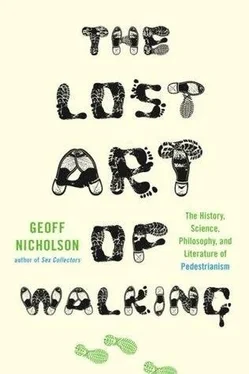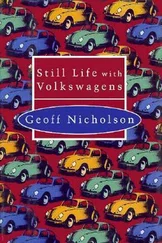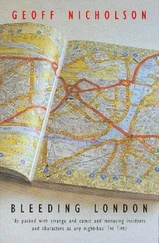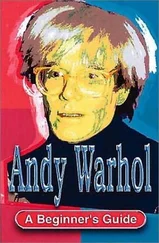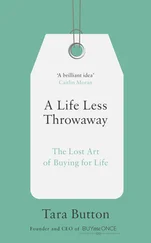‘Oh yeah’, he said, ‘the epicenter. Blake, Defoe, and Bunyan’. (All three of them have memorials there, though current scholarship thinks none of them is buried there.) ‘My theory is that all lines of energy or intelligence move out from that particular cluster. Bunyan’s Pilgrim’s Progress is actually the ultimate English walking book, where the physical journey that he does then becomes fabulated into this Christian mythology, but all the places are actually mappable. And then Daniel Defoe, because he traveled around the whole of England as an intelligencer and spy and double man. And then Blake with his cosmic and imaginary journeys, with specific wonderful transits of London that are in the Jerusalem poem where he starts on Highgate Hill, through the narrows of the riverside, and he actually lists all these places. So I think any sense of a journey must begin on that spot, in this wonderful cross between the three of them’. In Lights Out , he writes:
‘Bunhill Fields. Everything I believe in, everything London can do to you, starts there.’
Sinclair’s appearance is professorial, alert, a touch gaunt, unamused, with a very correct posture that might make you believe he’d had a spell in the army, which as far as I know he hasn’t. There was none of the soft fleshiness that deskbound writers are heir to. Maybe it came from all the walking. His voice, however, was soft, gentle, of a higher pitch than you’d expect to hear coming from that severe face. He was friendly but reserved, and obviously accustomed to being interviewed, even though I insisted I wanted this to be a conversation rather than a Q and A.
‘London’, he said, ‘is the ultimate walking city, although it’s a kind of battle — it has that mysterious labyrinthine quality that keeps it interesting. It’s never the same twice, and you duck in and out of alleyways and there’s so much business going on, and very soon you can negotiate into green spaces, rivers. It keeps it interesting’.
This is what I had come to hear. I was still on my sensory derangement kick. In fact I was still popping opiates for my recovering broken arm, but I wanted to talk about more recreational forms of medication. I’ve only once done any walking while under the influence of LSD and it wasn’t much fun. I was walking in a crowded street, not in London but in Cambridge, and I believed I could read the minds of the people walking toward me. They were all nightmarish minds that I’d have preferred not to have been able to read. I said I couldn’t imagine walking around London on acid.
‘Very wise’, Sinclair said, ‘because underneath there’s a monstrous aspect to it’.
The people I know who support the idea of walking around on LSD say what’s so great about it is the way you see all the minutiae and fine detail that a drug-free mind simply skims over.
‘But’, said Sinclair, ‘you can train yourself to log and sense those details anyway. Over the years you can come to recognize aspects and details, down to the smallest particulars, and incorporate them into a larger sense of the whole. That’s really what walks are about. As well as hoovering up information, it’s a way of actually shifting a state of consciousness, and you get into things you didn’t know about, or you begin to find out about, and that’s the interesting part. Otherwise, it’s just reportage’.
I sensed that he thought few things in the world were quite as pernicious and worthless as reportage.
In his books Sinclair is seldom a solitary walker. He has a loose posse of fellow obsessives, mostly male, who share a taste for walking, thinking, recording, talking; especially talking, he said.
‘It’s the only time you’ve got to have a long conversation, even though it contains a lot of silence. You stop to have breakfast in a greasy spoon, then later in the day you drop into a pub, and you can have different kinds of conversation from the kind you have as you’re rambling along, when you’re not quite together, or you come together and then you’ll do a stretch where one person goes ahead, then you meet up and he notices something, you notice something, over the course of the whole day, and there it is, it’s very, very civilized, a perfect philosophical dialogue’.
I wondered if he had a series of set walks.
‘Yes, because we’ve been in this house since 1969, so there are many set-piece walks that I do. I’ve got different walks for different questions or problems or ideas that I’m dealing with, a whole chain of maybe fifty different walks that you do for different things.
‘One would be that short-story walk. If it was a more confused situation, if I was worrying away at something, I’d go down to the river — it would be one of two ways. If it was a seriously difficult thing that needed to be really thought out, I’d go down the canal to Limehouse, get on the river, then I could go down the river as far as the problem needed, and loop back. If it was something more straightforward, I’d go straight down Bethnal Green, through Brick Lane down to Wapping, and hit the river there, and that would be enough to resolve this one thing, and if it was something I was looking for still, I’d go up to Waltham Abbey or the New Forest or Tilbury or something serious’.
So, I suggested, the size and nature of the problem determined the size and nature of the walk.
‘But it needn’t necessarily be a problem’, he said. ‘It might just be recharging the batteries in a particular way, or I have an instinct that there’s something interesting there and I take off in that territory’.
Given that he’s written so explicitly about where he lives and walks, and since he continues to live and walk in the same place, I wondered whether he was ever recognized by fellow walkers.
‘For a period I kept bumping into people somewhere around Shoreditch’, he said, ‘who were actually walking about with books of mine, doing various projects from the books, but I haven’t of late seen any’.
And did he reveal himself to them?
‘A couple challenged me, and one I saw just reading the book and I talked to him and pointed something out that he was looking for, and a couple of times on the canal, too, I saw a guy on a bike who was cycling through one of the books and ticking things off. He practically ran into me. But I think there are huge numbers of people walking, not with my books, but walking and doing their own endlessly strange projects across London’.
I mentioned that I’d been rereading D.H. Lawrence’s Sons and Lovers , and was amazed by the huge distances the hero Paul Morel would walk in order to go and see his girlfriend Miriam. Sinclair’s eyes lit up again. ‘Yes indeed’, he said.
The fictional Miriam is closely based on Lawrence’s own girlfriend, Jessie Chambers. Morel’s mother says:
‘She must be wonderfully fascinating, that you can’t get away from her, but must go trailing eight miles at this time of night.’
And she’s right, of course. Miriam is wonderfully fascinating. The evenings together — Paul and Miriam’s, D.H. and Jessie’s — were intense and passionate, and one of their passions was for literature. In Jessie Chambers’s memoirs she mentions the books they discussed. Turgenev’s Fathers and Sons was one of them, its title perhaps an inspiration for Lawrence’s own novel.
Iain Sinclair got up, left the room, and came back a minute or two later with a small blue hardback copy of Fathers and Sons . He opened it up and held it out to me. There on the flyleaf was the signature ‘Jessie Chambers’. This was Jessie Chambers’s own copy of Fathers and Sons . This book had belonged to the woman for whom Lawrence was prepared to do so much walking. Sinclair had been given the book by a dealer as a thank-you for carrying a box of books.
Читать дальше
